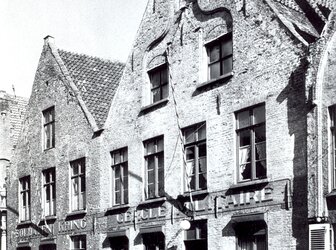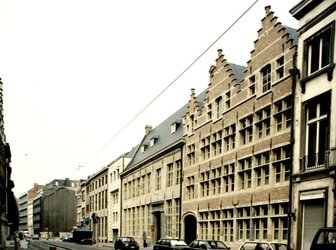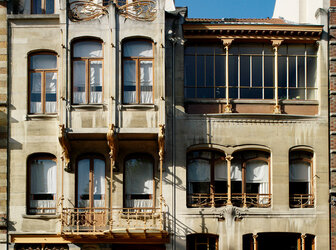Gare Maritime, Brussels
The Gare Maritime project concerns the renovation of a former freight station into an urban hub with integrated workspaces, events spaces, thematic retail stores and a food hall. The transformed space was renovated with respect for the original fabric and with environmentally ...
Read more
Project details
Description:
The Gare Maritime project concerns the renovation of a former freight station into an urban hub with integrated workspaces, events spaces, thematic retail stores and a food hall. The transformed space was renovated with respect for the original fabric and with environmentally sustainable solutions employed throughout. This building, which has been redesigned by architects Neutelings-Riedijk, is now an additional focal point of the entire Tour & Taxis site in the city of Brussels. Jan de Moffarts Architects is responsible for the restoration of the building envelope and steel structure and worked together with Bureau Bouwtechniek, the executive architect of the Gare Maritime. The project is fully owned and funded by Extensa Group. The Gare Maritime, covering approximately 40,000 square metres, had remained empty since the 1990s and had suffered some degradation from disuse. The implementation and results of the Gare Maritime project are each an example in circular building. The integrity of the century-old industrial building has been preserved in the redevelopment process, while its function has been modernised with durability in mind. Twelve separate modules made of cross-laminated timber structures finished with European oak have been constructed inside the Gare Maritime to hold office and retail spaces, and are completely reversible. The wooden roofing and steel structure have been restored to their original shape and the original cobble stones were ground down into smooth flat paving stones and reused in the building. 27,000 square metres of workspace, 15,000 square metres of retail space and 7,500 square metres for public amenities and other facilities have been created. Some of the adjacent historical buildings, for example the “Quai aux Poissons” and the “Produits Dangereux” building, were also refurbished in the process. Energy for heating and cooling is produced via geothermal wells dug 140 metres below the building. Rainwater is collected for use in the toilets, to water the more than 3,000 metres of indoor gardens and for cooling. Solar panels power the building, and some windows use an innovative tinted glazing technology which helps to regulate light and temperature inside the building. The building aims to achieve an ‘excellent’ BREEAM rating, the world’s leading sustainability assessment method for buildings. Gare Maritime will also have space for public amenities, with the public authorities being consulted to determine the best amenities to benefit the neighbourhood. Its gardens and plazas are open for everyone to enjoy and several events, large and small, that are free and open to the public have already taken place there.
Similar projects

17th century

16th-17th century

Early 17th century

20th century

1902 - 1907

19th century

19th century

17th century

16th century

It was built on the former royal domain of King Leopold II. 1902-1903

1898

19th century







